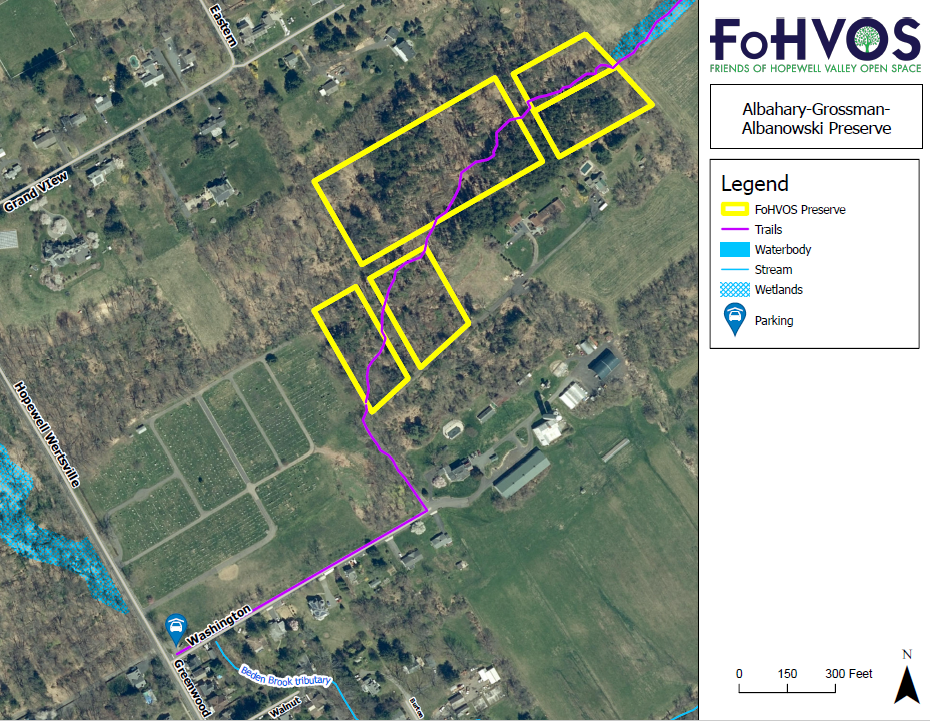Albahary and Grossman are located just north of Hopewell Borough in the foothills of the Sourland Mountain region. The area has a unique history—Webster Edgerly, founder of a health and self-improvement movement called Ralstonianism, purchased this land in the late 1800s. He envisioned a utopian community, Ralston Heights, for his followers. Buyers were not forthcoming, and many of the planned houses and public roads between Hopewell-Amwell and Hopewell-Wertsville Roads were never built.
Click here to read the stewardship plan for more detailed ecological information.
The Albahary & Grossman Preserves are comprised of coniferous forest from an abandoned plantation. The coniferous forest accounts for nearly 80% of the preserve. The canopy is dominated by Norway spruce with ash and Norway maple in smaller numbers.
The gaps between the spruces are colonized primarily by the invasive plant species Japanese aralia and the occasional ash tree. The Japanese aralia has run rampant throughout the preserve due to the suppression of the native plant community from deer browse. The canopy gaps from deer browse have also facilitated the growth and spread of invasive mile-a-minute vine. Multiflora rose and Japanese barberry are scattered throughout the preserve.
Native plant species present in the preserve include spicebush, ash, Jack-in-the-pulpit, and false Solomon’s seal. These plant species are in decline due to deer browse and invasive species proliferation. Reduced deer density would allow these species to rebound, with the spicebush and ash shading out the invasive plants dominating the preserve.
Albahary & Grossman are part of the Sourland Mountain region. Their proximity and connection to this environmentally sensitive area make this preserve a high priority for our stewardship efforts. To restore the health of this preserve, we are focusing on eradication of emerging invasive species. Once the invasive species are under control, the native plant community will recover and provide forest and woodland habitat for our area’s wildlife.
 Click here to download a PDF version.
Click here to download a PDF version.
